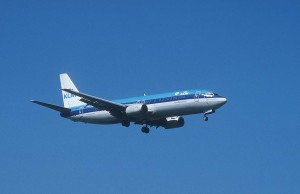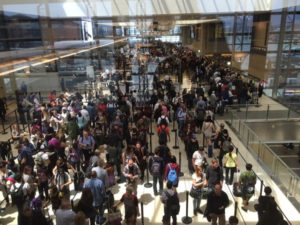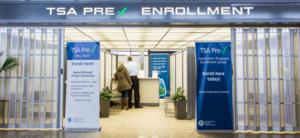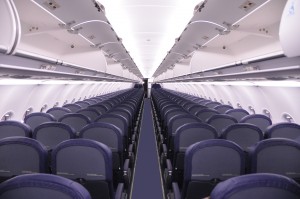
Before you fly, check out these tips to make things go more smoothly
Leading-edge baby boomers — those born in the late 1940s — are now edging into their 70s, and with that inevitably come new challenges when we travel, no matter how healthy we are.
Much as we may hate to admit it (and I’m a prime offender in this regard), we may walk a bit slower, require assistance from time to time, and need to take care of ourselves a bit more.
Flying and airports can be especially vexing, and so I was struck by this piece by Bay Area freelance journalist Scott Morris from the excellent website caring.com that’s filled with tips on how to make the flying and airport experience a bit smoother.
Here’s Scott on a topic of interest to anyone who flies, but especially to older travelers:
By Scott Morris
Flying can be difficult for even the most energetic and experienced travelers, and can become more difficult with age. Yet travel is in our blood.
According to Victoria Borton, vice president of lifestyle products and services at AARP Services, Inc., 75 percent of AARP members report making at least one leisure trip a year, either by train, plane or car.
Research shows that seniors travel as much as anybody. In fact, people 50 or over account for 45 percent of round-trip fliers for leisure trips, according to media research firm GfK MRI.
People between 50 and 69 years old are even more likely to fly than twenty-somethings, and people who are 70 to 74 years old are just as likely to fly as those in their 20s, the firm’s research shows.
We’ve compiled a few airport and in-flight assistance tips for older travelers to help ensure that your next flight goes as smoothly as possible.
1. Booking Flights and Planning Your Trip
When planning your trip, keep in mind that there might be some discounts and special accommodations available for older travelers. For example, the AARP offers special travel deals to its members through the AARPAdvantages website, including discounts on flights, hotels, rental cars and tour packages.
“We’ve got offers for just about any type of travel for members,” Borton said. You can join AARP starting at age 50.
2. Getting to the Airport
Just getting to the airport can be a challenge. Trains, taxis and other transportation services often charge extra when you’re headed to the airport, while driving there yourself can be difficult to navigate and you may have to park far from where you need to go.

Security lines at LAX (Los Angeles International) can stretch almost to Anaheim. Photo by Tara Lee Tarkington on twitter.
For your next trip to the airport, you may want to consider a ride sharing service that caters to seniors.
3. Consider a Concierge
While airlines are legally required to provide a certain level of assistance to accommodate passengers with special needs, you may want to consider paying for extra assistance from a concierge. Numerous services are available.
American Airlines offers a Five Star Service for airport assistance for seniors and others flying first class from the curb to the gate. Other services are available through credit card companies or independently, while some general concierge services like Envoy, which assists seniors with a variety of tasks and errands, can also help with travel.
4. Getting Through Security
Mobility issues and medical conditions can create special considerations for older travelers going through airport security screenings.

TSA Pre-Check Enrollment Center. Photo from TSA.
To expedite the process, the Transportation Security Administration recommends getting a TSA notification card to alert agents to your health condition. Otherwise, you should bring medical documentation. People with disabilities and medical conditions aren’t required to take off their shoes at security, but may have to undergo additional screening for explosives.
You can save a few steps by using the TSA Precheck service, so you can avoid removing your laptop, belt or jacket while being screened.
But it’s best to allow extra time, especially when flying with external medical devices, as those may require additional screening as well.
5. Boarding
If you have any medical needs that might prevent you from flying, keep in mind that the federal government has strict guidelines for airlines dealing with people with disabilities or special needs.
Airlines are required to provide airport assistance for seniors with disabilities who are getting on and off the plane and making connections. Also, any assistive devices you may have don’t count against your carry-on luggage.
Airlines can’t legally refuse service on the basis of disabilities, don’t require advance notice that a person with a disability is traveling, and may not limit the number of people with disabilities on a flight.
However, airlines can require up to 48 hours notice for certain accommodations requiring preparation, such as respirator hookups or transportation of an electric wheelchair on an aircraft with less than 60 seats.
All that said, it can’t hurt to let your airline know if you have any special needs ahead of time to ensure a smoother boarding experience.
6. In the Seats
Mobility issues can create challenges once you get to your seat on an airplane, potentially making it difficult to get up and use the restroom or otherwise move around the cabin.

Seating is cramped in economy, so it’s good to keep moving if possible.
Max Robinson of Mahlatini Luxury Travel points out that seniors tend to be more susceptible to blood clots and may need to get up during flights to prevent injury.
He suggests that seniors at least try to move their legs some during the flight — even just moving the feet from heel to toe can help keep circulation moving.
You or your loved ones may want to consider wearing compression socks for flying like those sold by Rejuva.
It can also be a good idea to request special accommodations when booking your flight, such as a seat with extra legroom. Make sure to bring a doctor’s note describing why you need it.
7. Special Considerations: Flying With Dementia
A particularly unique challenge for many families and caregivers is flying with a loved one suffering from dementia. The Alzheimer’s Foundation of America recently released a list of tips of their own for this situation.
The group recommends consulting your loved one’s doctor about whether travel would be safe. In the early stages of dementia, the person may enjoy travel, but it could become overwhelming in the later stages of Alzheimer’s or other dementia-causing diseases.
In any case, there are steps that you can take to make travel less anxiety-inducing for your loved one, like traveling to familiar destinations and making the travel day as close to the person’s daily routine as possible.
If the person’s dementia is worse at certain times of day, avoid flying at those times. Make sure to take breaks along the way.












One Response to How to Glide Through Airports and Fly Right